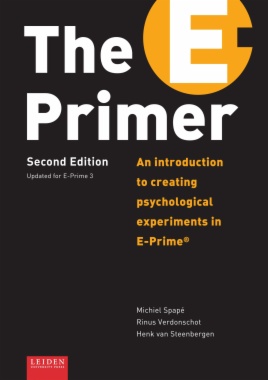"E-Prime® is the leading software suite by Psychology Software Tools for designing and running Psychology lab experiments. The E-Primer is the perfect accompanying guide: It provides all the necessary knowledge to make E-Prime accessible to everyone. You can learn the tools of Psychological science by following the E-Primer through a series of entertaining, step-by-step recipes that recreate classic experiments. The updated E-Primer expands its proven combination of simple explanations, interesting tutorials and fun exercises, and makes even the novice student quickly confident to create their dream experiment. Featuring: * Learn the basic and advanced features of E-Studio’s flexible user interface * 15 step-by-step tutorials let you replicate classic experiments from all Psychology fields * Learn to write custom code in E-Basic without having any previous experience in programming * Second edition completely revised for E-Prime 3 * Based on 10+ years of teaching E-Prime to undergraduates, postgraduates, and colleagues * Used by Psychology Software Tools to train their own staff!"

